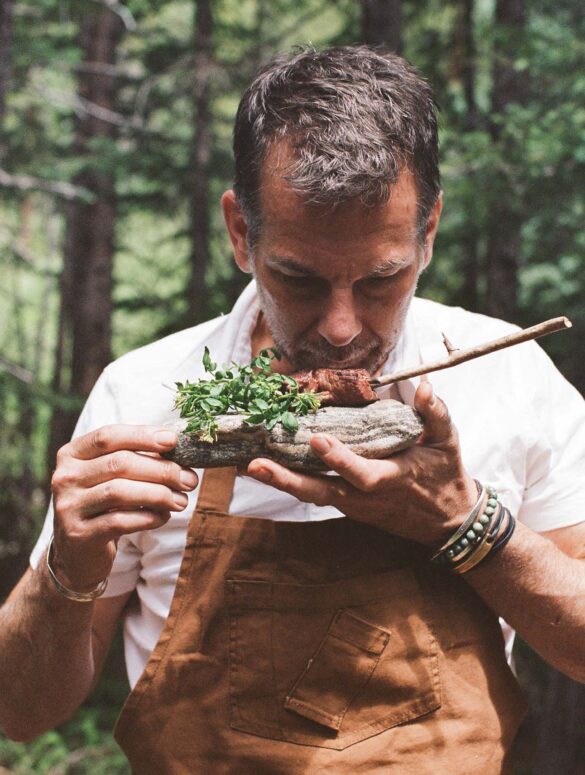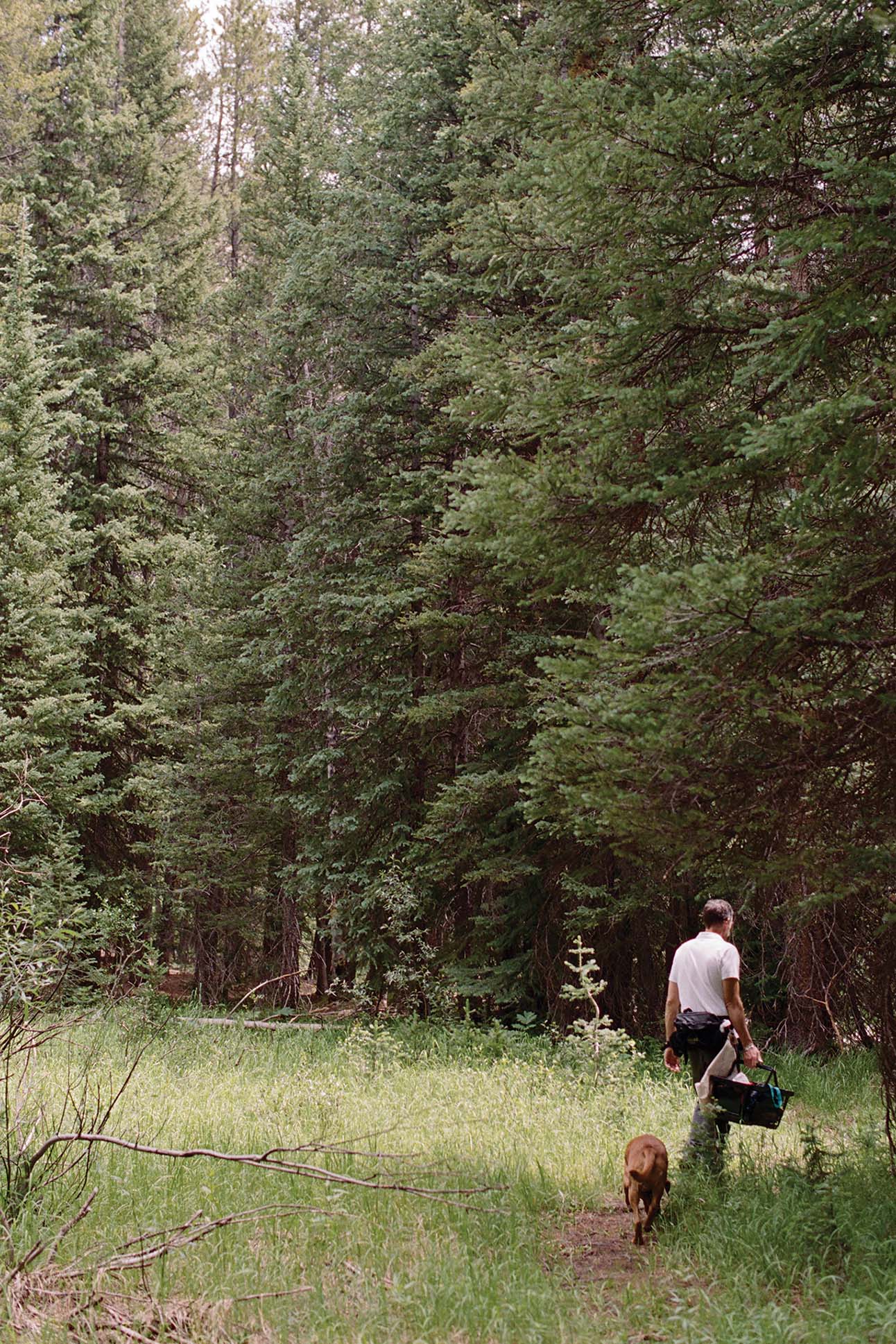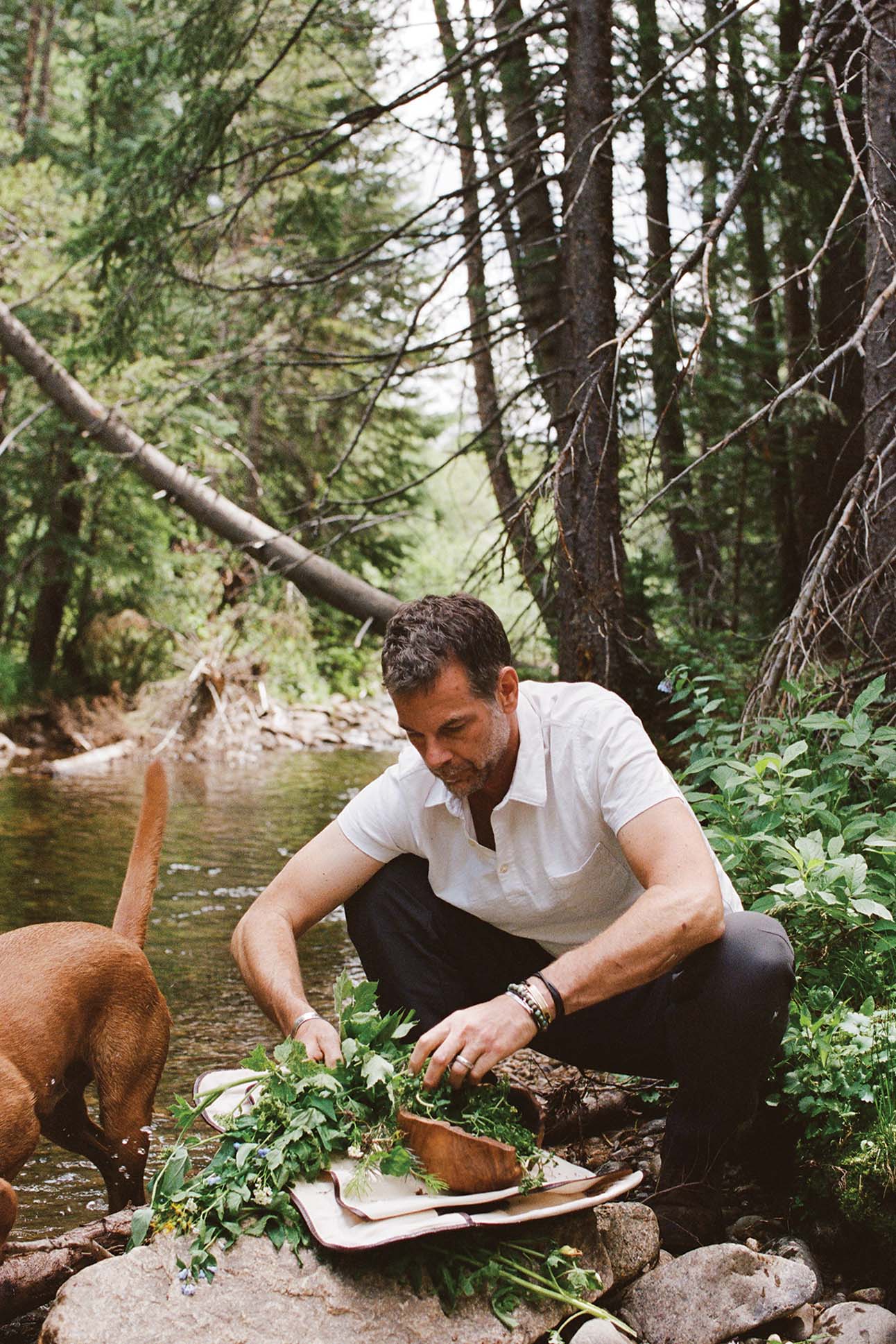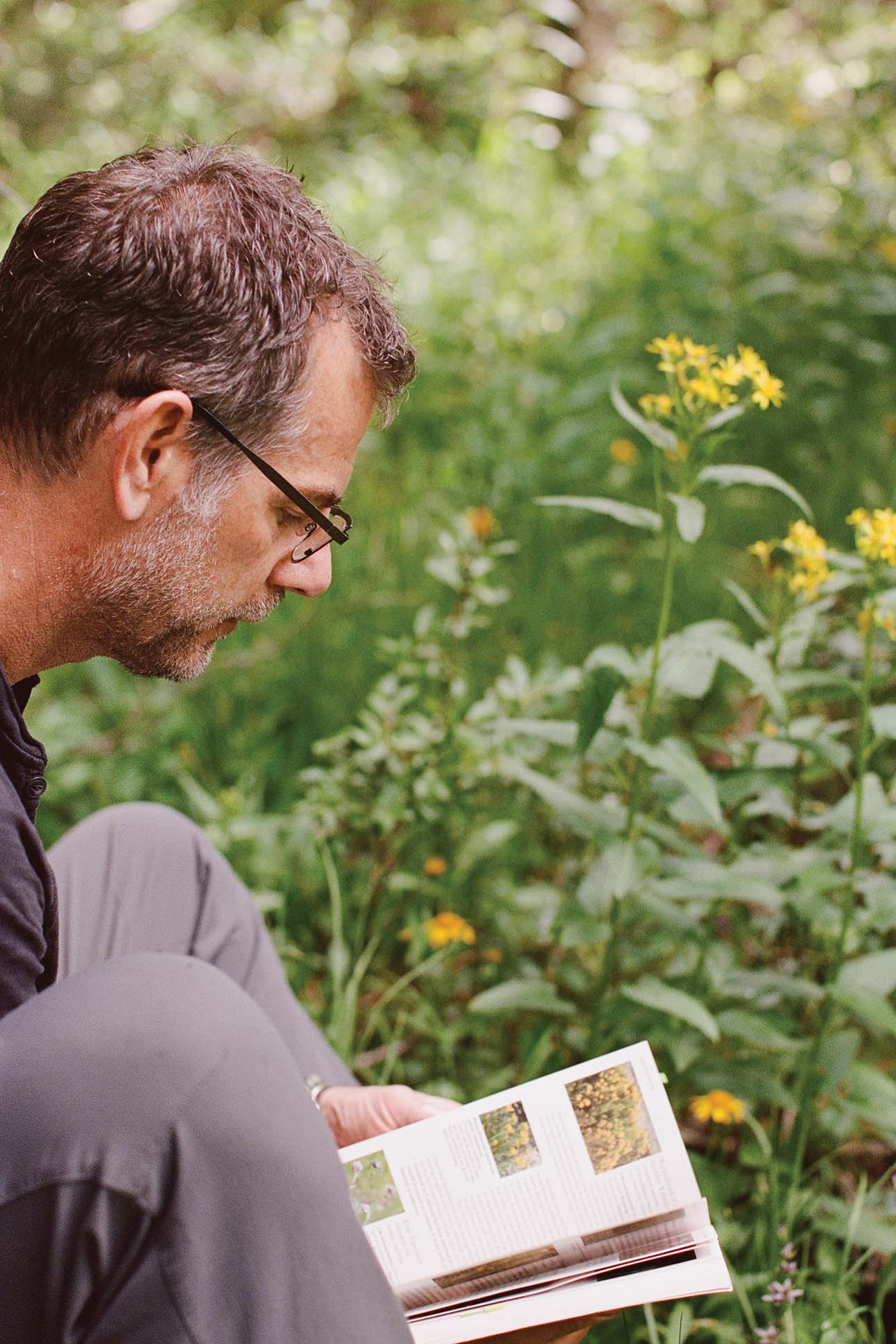Text by Anna Harmon
Images by Trevor Triano
With the arrival of summer in the Roaring Fork Valley, nature sets out an inspired tasting menu. There’s the blossoming of the lilac and its heady scent; the blooming of dandelion flowers; the brief window when blue spruce trees put forth their tender tips. These essences of Aspen’s seasons have come to define the flow and taste of Barclay Dodge’s life as chef of the restaurant Bosq, which he owns with his wife, Molly Dodge.
“Summertime is an explosion,” he says. “I always preach to my cooks, I want this exploding out of the plate. If you think it’s too much going on, then do more—I want you to feel the life of summer.” On plates they spread thin slices of yellow heirloom tomatoes, top summer melon with bee pollen and watercress, place apricots soaked in dandelion syrup.
Nearly every day, Dodge wakes around 6:30 a.m. and drives up Independence Pass—one of his favorite places—to forage ingredients. He has destinations bookmarked in his head, none of which involve trailheads or commonly traversed paths. He’ll pull over and head into the woods to where he has come to expect the ingredients he loves. Yearly, he returns to the same mile-long watercress patch growing along a burbling stream that feeds into the Roaring Fork River. He found it in the early 2000s, and he has never seen signs of another person there.
The chef has been foraging in the area since the late 1990s, after tagging along with a mushroom forager who sold to a restaurant where he worked. “He introduced me to the ability to see around you and to find zones when you’re foraging,” he says. Now, Dodge can sense if he’s in the right spot for a mushroom based on cues in the grass, soil, sunlight, and tree cover.
Dodge got his first restaurant job as a teen in Aspen. He moved to the city from Alabama in 1983 at 13 years old with family, and when he needed a summer job in high school, there were limited options: construction, retail, or restaurants. The thrill of walking home with $100 cash tips in his pocket from bussing tables sold him on the industry. While he wasn’t thinking about local ingredients then, they were a part of his upbringing back in Alabama: His great-grandmother sourced locally out of necessity, catching frogs in her backyard to fry up, as someone from a resource-strapped small town had to do in her era. To this day, Dodge also clearly remembers her brownies that came out of the freezer. To him, she had the touch of a true cook.


He went on to travel the world, from Mexico to Spain, to experience new cultures and work at acclaimed restaurants such as El Bulli, which has informed the way he thinks about flavors and techniques. But Dodge came back to Aspen for family, the beautiful surroundings, and the opportunity to serve clientele at a high level while still being able to close Bosq in the off-seasons to spend time with family and gain new experiences. (He encourages his chefs to stage at other restaurants when Bosq is closed, and this fall, he is taking the team to Oaxaca for inspiration.)
In the summer, what Dodge and his team forage and source largely defines the evolving menu. Dodge makes weekly buys from what he calls the “Green Belt,” a valley dense with farms and ranches about two hours away, through a company called Farm Runners. He also visits farms in the valley between Aspen and Glenwood Springs, including the biodynamic ranch Sustainable Settings near Carbondale, where he’s become close friends with the owner. He knows summer is in full swing around July 4, when local produce surges from asparagus and some stone fruit to a bounty of options. Unlike a lot of chefs, Dodge is also eager to change up his ingredients. A farmer from about 20 miles away once told one of his cooks he had duck eggs, so they bought 48 and featured them on the menu for four days.
Summer lingers into October in the Roaring Fork Valley, supplying an abundance of tomatoes and mushrooms even as the days get shorter. But then, Dodge says, “You’ll see one aspen tree turn gold and you’re like, summer’s over.”
The first frost is a hard stop. The stream of produce slows to a trickle, and the mushrooms are gone. The trees thrill in their autumnal hues. Bosq closes for the fall off-season before reopening in December, leaning into what the body craves in the cold months and embracing the stark aesthetic of six feet of snow on the ground. But throughout the year, the taste of summer lingers on the tongue in the preserved essence of plums and spruce tips.
Field Notes from Chef Barclay Dodge
Experiment with fresh, local ingredients.
“If a farmer brings me a one-gallon Ziploc bag of something, I’ll change the menu for two days to use it,” Dodge says.
Cook what you can forage.
Dodge finds that wild ingredients have more intense flavors than farmed ones. He recommends novice foragers bring a book—or, even better, an expert—with them. Compare what you’ve found with pictures, and if you’re still not certain you’ve identified the ingredient, take it to a reliable resource to confirm. When he was learning about local ingredients, Dodge once briefly misidentified hemlock as osha (bear’s root), a mistake he is certain to not make again. These days he also enjoys the company of Colorado foragers who connect over Instagram and discuss their findings.
Respect your resources.
Hiking along a stream one summer in search of green pine cones, Dodge came across a dammed pool that was flush with them. As he started harvesting the cones, squirrels in the tree above started chattering violently, and he realized he had stumbled upon their winter haul. “So I took a few and left the rest,” he says.
Find ways to use local produce year-round.
Spruce tips are only abundant for about three weeks of the year, but Dodge celebrates their essence all year by freezing them, making syrups and oils, and using them to preserve other ingredients like venison heart. To make his pine tip syrup, a take on mugolio, combine half spruce tips to raw sugar, put it in a jar with a rock on top to compress it all, and leave it for two months to allow the sugar to pull the moisture from the spruce tips.
Listen to what your body craves as seasons change.
Dodge has found he enjoys plums in winter. “We put plums up in all kinds of ways—umeboshi, lactose fermentation, syrups, vinegars. … There’s something about red in the winter that I really gravitate towards. Pigment definitely has a flavor and a feel,” he says. “Over the course of the winter, we realize what our bodies are telling us, what we feel like using.”





